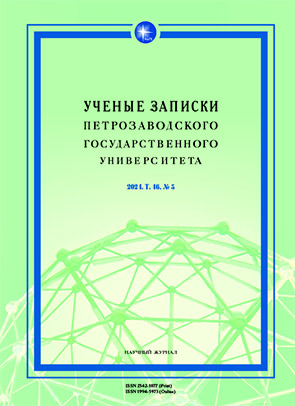«ПОЛЗУЩИЕ-ШИПЯЩИЕ»: НАИМЕНОВАНИЯ ПОНЯТИЯ «ЗМЕЯ» В ВЕПССКОМ ЯЗЫКЕ (на основе диалектных и фольклорных материалов)
“CRAWLING-HISSING”: NAMES FOR THE CONCEPT “SNAKE” IN THE VEPSIAN LANGUAGE (a study of dialect and folklore materials)
Author(s): Olga Yurievna Zhukova, Nina Grigorievna ZaitsevaSubject(s): Language and Literature Studies, Semantics, Finno-Ugrian studies, Baltic Languages
Published by: Петрозаводский государственный университет
Keywords: Baltic-Finnic languages; Vepsian language; nomination; vocabulary; etymology; semantics; incantation; linguo-folkloristics; ethnolinguistics;
Summary/Abstract: The article investigates the areal, etymological, semantic, and linguo-geographical aspects of the names for the concept “snake” in the dialects of the Vepsian language and in the Vepsian folklore, primarily in its most ancient genre – incantations against snakebites. According to the studies, in the Baltic-Finnic language area, due to poor knowledge of snakes by people, the same names can be used for different types of snakes in one populated place or act as their generic name, which is also confirmed by the materials of the Vepsian language. The dialects of the Vepsian language have preserved some Baltic-Finnic heritage (mado, vaskič) and even some Uralic heritage (kü) in the words used to denote a snake, which was reflected in folklore as a more ancient phonetic embodiment of the lexeme kü (kija, kihi, kihikeine, tihikiine); borrowings from the Russian language (gad) are present in the dialects, and original Vepsian lexical elements (ujelii) also appeared. The names for the concept “snake” in Vepsian folklore are descriptive, represented by nouns and participles, and define the appearance of the animal by nomination (‘ball, bad ball’ – kereine, tühj kereine; ‘stripe of willow bark’ – pajusarg; ‘malice’ – pahust’ paha; ‘hissing and whistling’ – šiheidajad-šaheidajad, šiheričviherič, etc.). The dual names used in folklore are characterized by alliteration (pahust’ paha, kandoiden kabičii). The emergence of descriptive names for the figure of a snake in folklore can be explained both by the taboo on the pronunciation of the name of this dangerous animal, and by the peculiarities of the folklore language.
Journal: Ученые записки Петрозаводского государственного университета
- Issue Year: 46/2024
- Issue No: 5
- Page Range: 8-14
- Page Count: 7
- Language: Russian

